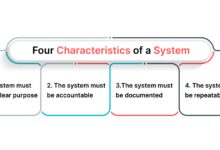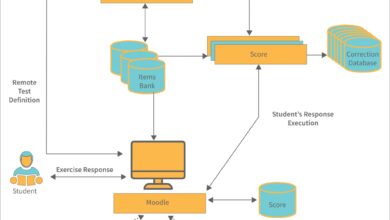System Crasher: 7 Shocking Truths You Must Know Now
Ever wondered what happens when a system crasher strikes? It’s not just a glitch—it’s chaos in motion, disrupting everything from your laptop to national infrastructure.
What Exactly Is a System Crasher?

The term system crasher might sound like something out of a cyberpunk movie, but it’s very real and increasingly relevant in our digital world. A system crasher refers to any software, hardware failure, malicious code, or human action that causes a computing system to fail unexpectedly, leading to downtime, data loss, or security breaches. These crashes can affect personal devices, enterprise servers, or even critical infrastructure like power grids and healthcare systems.
Defining the Term: Beyond the Buzzword
While often used casually, the phrase system crasher carries technical weight. In computer science, a system crash occurs when an operating system (OS) stops functioning properly due to an unhandled exception, memory leak, or hardware fault. When this is caused intentionally—say, by a hacker exploiting a vulnerability—the perpetrator might be called a system crasher. However, the term also applies to unintentional causes, such as poorly written drivers or overheating components.
- A system crasher can be a person, a program, or a condition.
- Crashes may result in blue screens (Windows), kernel panics (macOS), or segmentation faults (Linux).
- The impact ranges from minor inconvenience to catastrophic system failure.
Types of System Crashes
Not all crashes are created equal. Understanding the different types helps identify whether a system crasher is at play. Common categories include:
Software-induced crashes: Caused by bugs in applications or OS components.For example, a memory leak in a browser can eventually bring down the entire system.Hardware failures: Faulty RAM, failing hard drives, or overheated CPUs can trigger crashes.These are often mistaken for software issues.Malicious attacks: Hackers use denial-of-service (DoS) techniques or exploit zero-day vulnerabilities to turn systems into crash victims—making them classic examples of a system crasher.”A single line of malicious code can turn a stable server into a system crasher within seconds.” — Cybersecurity Expert, Dr.
.Elena TorresHistorical Cases of Notorious System CrashersThroughout computing history, several high-profile incidents have demonstrated the devastating power of a system crasher.These aren’t just technical failures—they’re cautionary tales about our reliance on fragile digital ecosystems..
The Morris Worm (1988): The First Digital Epidemic
One of the earliest known system crashers was the Morris Worm, released by Robert Tappan Morris, a Cornell graduate student. Designed to measure the size of the internet, the worm spread uncontrollably due to a coding error, infecting around 10% of the 60,000 machines connected to the internet at the time.
- It exploited vulnerabilities in Unix systems using debug modes and weak passwords.
- The worm didn’t aim to destroy data but caused massive slowdowns and crashes.
- Morris became the first person convicted under the U.S. Computer Fraud and Abuse Act.
This event marked the birth of modern cybersecurity awareness and highlighted how a single actor could become a global-scale system crasher.
Stuxnet: When a System Crasher Became a Weapon
Discovered in 2010, Stuxnet was no ordinary malware. It was a state-sponsored cyberweapon believed to be developed by the U.S. and Israel to sabotage Iran’s nuclear enrichment program. Unlike typical viruses, Stuxnet specifically targeted industrial control systems made by Siemens.
- It spread via USB drives and exploited four zero-day vulnerabilities.
- Once inside, it altered centrifuge speeds, causing physical damage while reporting normal operations to operators.
- The result? Thousands of machines crashed or malfunctioned—making Stuxnet one of the most sophisticated system crasher tools ever deployed.
Stuxnet blurred the line between digital disruption and physical destruction, proving that a system crasher could have real-world geopolitical consequences.
How System Crashers Exploit Vulnerabilities
To understand how a system crasher operates, we need to dive into the anatomy of system vulnerabilities. Whether accidental or intentional, these exploits take advantage of weaknesses in design, implementation, or human behavior.
Common Attack Vectors Used by System Crashers
System crashers don’t just randomly cause failures—they follow predictable patterns. Here are the most common attack vectors:
Buffer Overflow: When a program writes more data to a buffer than it can hold, it overwrites adjacent memory.This can lead to arbitrary code execution or immediate system crashes.Learn more about buffer overflows at OWASP.Denial-of-Service (DoS) Attacks: By flooding a system with traffic or requests, attackers exhaust resources like CPU, memory, or bandwidth, turning the system into a crash victim.Privilege Escalation: Gaining unauthorized access to higher-level permissions allows a system crasher to disable critical services or corrupt system files.Zero-Day Exploits: The Silent KillersA zero-day exploit refers to a vulnerability that is unknown to the software vendor.
.Because there’s no patch available, these flaws are gold mines for system crashers.Once discovered, they can be used to silently infiltrate and destabilize systems..
- Zero-days are often sold on the dark web for millions of dollars.
- They’re particularly dangerous because traditional antivirus software cannot detect them.
- Famous examples include EternalBlue (used in WannaCry ransomware) and the Adobe Flash zero-day exploited in targeted attacks.
According to a report by Zero Day Initiative, the average lifespan of a zero-day before discovery is 3.5 years—giving system crashers ample time to wreak havoc.
“The most dangerous system crasher isn’t the one you see—it’s the one already inside your network.”
The Role of Human Error in Creating System Crashers
While hackers and malware dominate headlines, human error remains one of the leading causes of system crashes. In fact, studies suggest that up to 95% of security incidents involve some form of human mistake.
Misconfigurations: The Silent System Crasher
One of the most common ways humans become unintentional system crashers is through misconfiguration. This includes leaving default passwords unchanged, opening unnecessary firewall ports, or granting excessive user privileges.
- A 2022 report by IBM found that misconfigured cloud storage buckets were responsible for over 15% of data breaches.
- In 2017, a misconfigured Amazon S3 bucket exposed the personal data of 198 million U.S. voters.
- Even small errors, like typing the wrong command in a terminal, can bring down entire servers.
These mistakes may seem minor, but they create perfect entry points for malicious actors or trigger cascading failures that turn a simple error into a full-blown system crasher event.
Phishing and Social Engineering
Another major contributor to system crashes is phishing. Attackers trick users into downloading malware or revealing credentials, which can then be used to deploy system-crashing payloads.
- According to Verizon’s 2023 Data Breach Investigations Report, 36% of breaches involved phishing.
- Once inside, attackers can install ransomware, logic bombs, or remote access tools that act as persistent system crashers.
- Employees with administrative rights are especially dangerous—if compromised, they can inadvertently become the vector for massive outages.
Training and awareness are critical defenses. Organizations that conduct regular phishing simulations reduce successful attacks by up to 70%, according to Phishing.org.
System Crasher in Gaming: When Players Break the Game
Beyond cybersecurity, the term system crasher has gained popularity in the gaming community. Here, it refers to players who exploit glitches or use modified software to crash game servers, ruin experiences, or gain unfair advantages.
Game Exploits and Modded Clients
In multiplayer games like Minecraft, Fortnite, or Call of Duty, some players use modified clients or cheat software to overload servers or trigger bugs. These tools can send malformed packets, duplicate items, or execute commands that the game wasn’t designed to handle.
- In Minecraft, “crash exploits” allow players to kick others from servers by sending oversized chat messages or entity spam.
- Some modded clients include built-in “crasher” features designed specifically to disrupt gameplay.
- Developers often respond with patches, but new exploits emerge constantly.
These actions not only degrade user experience but can also lead to permanent bans. Mojang, the developer of Minecraft, has implemented anti-cheat systems like Microsoft’s PlayFab Anti-Cheat to combat these threats.
The Ethics of Game Crashing
While some see game crashing as harmless trolling, others argue it violates fair play and damages the community. Consider:
- Crashing a server can disrupt tournaments, cost developers revenue, and alienate legitimate players.
- Some crashes result in lost progress or corrupted worlds—real emotional and financial cost.
- Repeated offenders may face legal consequences, especially if they distribute crash tools publicly.
“Just because you can crash a server doesn’t mean you should. It’s not skill—it’s sabotage.” — Professional Esports Commentator
The gaming industry continues to grapple with how to balance openness with security, especially in mod-friendly environments.
Preventing System Crasher Attacks: Best Practices
Whether you’re an individual user or managing a corporate network, protecting against system crashers requires a proactive, layered approach. No single solution is foolproof, but combining tools, policies, and education significantly reduces risk.
Regular Updates and Patch Management
One of the simplest yet most effective defenses is keeping software up to date. Vendors regularly release patches for known vulnerabilities—many of which are exploited by system crashers.
- Enable automatic updates for operating systems and applications.
- Use centralized patch management tools in enterprise environments.
- Prioritize critical updates, especially those labeled “security fix” or “critical.”
According to CISA’s Known Exploited Vulnerabilities (KEV) catalog, unpatched systems account for over 60% of successful cyberattacks.
Robust Firewalls and Intrusion Detection Systems
Firewalls act as gatekeepers, filtering incoming and outgoing traffic based on security rules. Intrusion Detection Systems (IDS) monitor for suspicious activity that could indicate a system crasher in action.
- Use next-generation firewalls (NGFW) that inspect packet content, not just headers.
- Deploy host-based IDS (HIDS) on critical servers to detect file modifications or unauthorized processes.
- Integrate SIEM (Security Information and Event Management) tools for real-time analysis.
Tools like Snort, Suricata, and OSSEC are open-source options widely used to detect potential system crasher behavior.
User Training and Access Control
Humans are both the weakest link and the first line of defense. Proper training and strict access controls minimize the chance of accidental or malicious system crashes.
- Implement the principle of least privilege (PoLP): users should only have the access they need to do their jobs.
- Conduct regular security awareness training, including phishing simulations.
- Use multi-factor authentication (MFA) to reduce the risk of credential theft.
Organizations that adopt MFA reduce account compromise incidents by over 99%, according to Microsoft.
The Future of System Crashers: AI and Automation
As technology evolves, so do the tools and tactics of system crashers. Artificial intelligence (AI) and automation are now being used not only to defend systems but also to attack them with unprecedented speed and precision.
AI-Powered Attack Tools
Modern system crashers are leveraging machine learning to identify vulnerabilities faster than humans ever could. AI algorithms can scan millions of lines of code, detect patterns, and even generate exploit code automatically.
- Tools like DeepExploit use neural networks to predict which inputs are most likely to cause a crash.
- AI can automate fuzz testing—randomly feeding data into programs to find weaknesses.
- These systems learn from each attempt, becoming more effective over time.
A 2023 study by MITRE showed that AI-driven fuzzing tools discovered 40% more vulnerabilities than traditional methods.
Automated Defense Systems
On the flip side, AI is also being used to fight back. Automated defense platforms can detect anomalies, isolate infected machines, and even patch vulnerabilities in real time.
- Microsoft’s Azure Sentinel uses AI to correlate threat data across networks.
- Darktrace’s AI system learns normal behavior and flags deviations that could indicate a system crasher.
- Autonomous response systems can shut down attacks before human operators even notice.
The future will likely see an arms race between AI-powered system crashers and AI defenders—each pushing the other to evolve.
Legal and Ethical Implications of Being a System Crasher
Intentionally causing a system crash isn’t just technically harmful—it’s often illegal. Laws around the world criminalize unauthorized access, data destruction, and network disruption.
Criminal Charges and Penalties
In the U.S., the Computer Fraud and Abuse Act (CFAA) makes it a federal crime to intentionally damage a protected computer. Penalties can include fines and imprisonment.
- First-time offenders may face up to 10 years in prison.
- If the crash affects critical infrastructure (e.g., hospitals, power plants), sentences can exceed 20 years.
- Civil lawsuits may also result in massive financial damages.
Internationally, the Budapest Convention on Cybercrime provides a framework for prosecuting system crashers across borders.
Ethical Hacking vs. Malicious Crashing
Not all system crashers are criminals. Ethical hackers, also known as penetration testers, deliberately try to crash systems—but with permission and for the purpose of improving security.
- They operate under strict contracts and legal agreements.
- Findings are reported to organizations so vulnerabilities can be fixed.
- Many work through bug bounty programs like HackerOne or Bugcrowd.
The key difference? Intent and authorization. A white-hat hacker prevents future crashes; a black-hat system crasher causes them.
What is a system crasher?
A system crasher is any person, software, or condition that causes a computing system to fail unexpectedly. This can be due to bugs, hardware failure, or malicious attacks.
Can a system crasher be unintentional?
Yes. While some system crashers act with malicious intent, others are caused by human error, software bugs, or hardware malfunctions.
How can I protect my system from crashers?
Keep software updated, use firewalls and antivirus tools, train users, and apply the principle of least privilege. Regular backups are also essential.
Is crashing a game server illegal?
It can be. If done intentionally and without permission, it may violate terms of service and computer crime laws, especially if it causes financial loss or data damage.
Are AI tools being used by system crashers?
Yes. AI is increasingly used to automate vulnerability discovery and exploit generation, making attacks faster and harder to detect.
Understanding the nature of a system crasher is no longer optional—it’s essential in our hyper-connected world. From historical worms to AI-driven attacks, these disruptions reveal the fragility of our digital infrastructure. Whether caused by hackers, errors, or rogue gamers, the consequences can be severe. But with proper defenses, awareness, and ethical practices, we can reduce the risk and build more resilient systems. The battle against system crashers isn’t just technical—it’s cultural, legal, and ongoing.
Further Reading:









